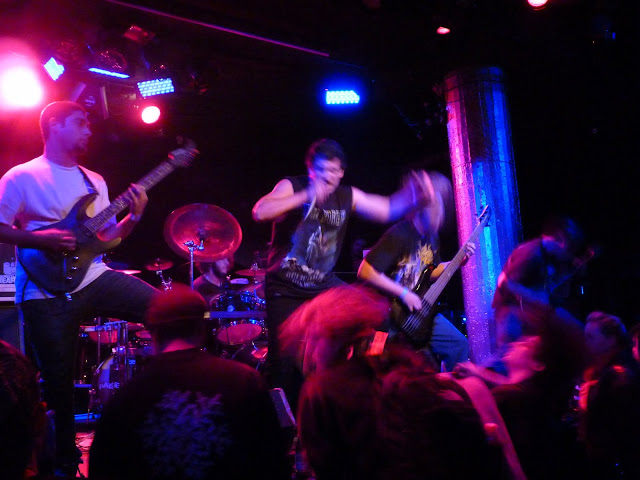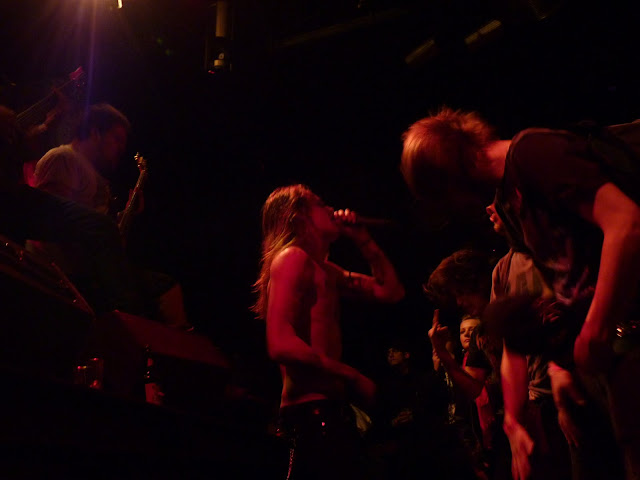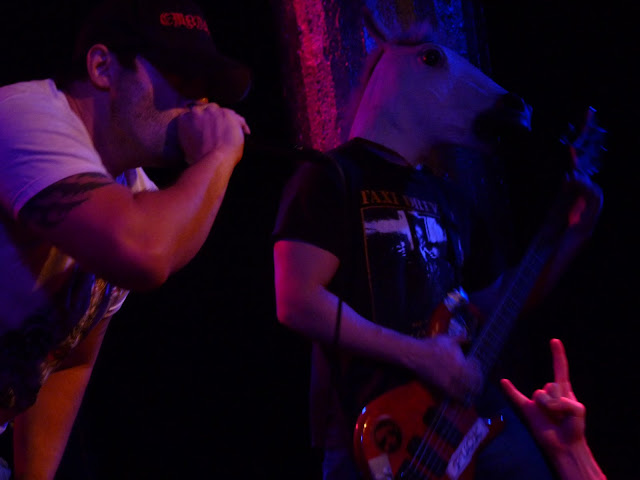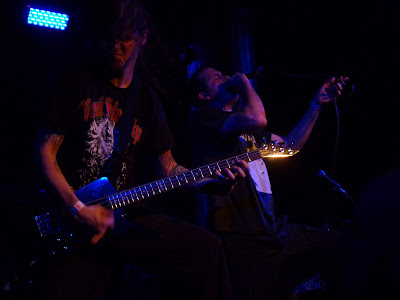I'm beginning to put my finger on what's so vexing to older metalheads about the current deathcore movement. It's not the interchangeable nature of the bands - the classic death metal bands had their own share of shameless copycats, jumping on the Florida/Stockholm/Birmingham bandwagons. Nor is it the music itself - technical, precise, and mind bogglingly fast, Chuck Schuldiner would have been proud to have these bands as his progeny. No, it's the deathcore fans - young, good looking, likeable and popular... these people are the antithesis of what a death metal fan should be, and are threatening cultural gentrification.
Death metal has always been the lowest tier of rock music's social ladder - despite taking punk's sonic misanthropy to its logical extreme, death metal and grindcore were considered so abrasive they were seen as self parody. And no matter how technically accomplished the musicians were, they were never esteemed in the same way a Kim Thayil or Billy Corgan was.
And yet now, for the first time in death metal's history, it's no longer considered outre or beyond the pale. The cool kids are waving their blast beat freak flag high, skinny jeans and all. And it's infuriating to see them invading our turf.
Just as the current "nerd chic" whitewashes away the memories of greasy weirdos and their 20-sided dice (-10 charisma points for that Star Trek shirt), the deathcore generation is nothing like the death metal kids of the past - with their styled hair and eyeshadow, they have more in common with the glam rock bands we detested. Even worse, they seem to be the popular kids - something antithetical to anyone who was a death metal fan in the 80's and 90's. I remember when wearing an Obituary shirt would mean instant harassment from whatever jocks I was passing by at the time. Now, they'd probably high-five me.
So it was interesting to see Cattle Decapitation - a band who won converts a few years ago with their trend-baiting "No Core, Just Gore" shirts - tour with a handful of deathcore bands. As a vegan death metal band, they're no doubt used to being slightly out of place.

Burning the Masses hail from CD's hometown of San Diego CA. Though barely out of high school, the tightness and proficiency with which they played was impressive, even to this cynic. And yet...none of it seemed particularly revelatory. Even as the audience danced like happy prospectors at the very hint of a breakdown, they all seemed to be going through the motions.


Knights of the Abyss are honestly one of the few deathcore bands that I have some fondness for, having seen them in Prague in 2008. Even though they're as generic as a Myspace metal band can be, their experience (and the fact that the singer wasn't afraid to spend the whole set in front of the stage with the audience) made me wish I paid more attention to the two albums of theirs that I have (and never listen to).

Devourment are what would happen if you drained Suffocation of all their mojo, and then forced them to jam with Mortician's drum machine. Apparently "Texas Death Metal" means "mind numbingly boring." See kids? You don't have to play deathcore to be painfully generic.

All of which left Cattle Decapitation in position to clean up nicely. Frontman Travis Ryan implored the crowd to come to the front and abandon the circle pit in the middle, stating "Believe me, you can't dance to this shit." Which isn't necessarily true, but you can see what he was getting at. His band doesn't do mosh parts, or anything that the young audience would recognize as spin-kick worthy. In the world of Cattle Decapitation, riffs appear and disappear out of screeching noise; the drum and bass work in lockstep to create an impenetrable wall, over which the guitars shriek, wretch and contort; and all the while the singer's depraved vocals stream out like bile. Simply put, Cattle Decapitation are Black Flag, if Black Flag were raised on a steady diet of Napalm Death, Cannibal Corpse, and PETA videos. Having seen both Cephalic Carnage and Brutal Truth in the last year, I can say without any doubt that Cattle Decapitation trump both of them in kicking the death/grind formula off its axis.
"This song is dedicated to New York's beautiful people... none of whom are in the room right now." It's good to know that someone remembers death metal the way it used to be.


